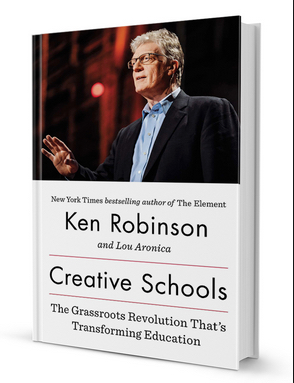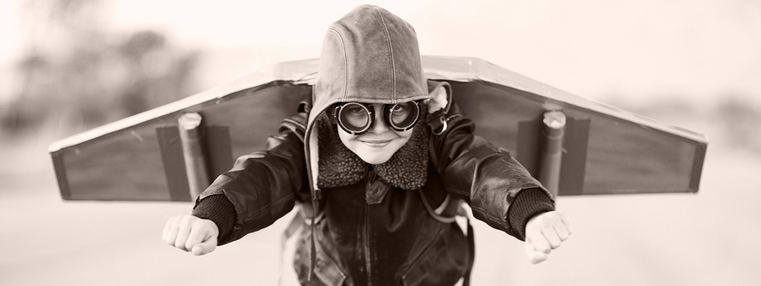The worlds are colliding. It’s more than old vs. new or low tech vs. high tech. It’s the clash of the mindsets, pedagogies, philosophies, systems, approaches, protocols and operations. I simply like to call it clash of the ATTITUDES.
That’s right. In the end, we do or don’t do something based on our attitudes. They come from a variety of places. But our general attitude towards how we approach the world or solve problems will dictate everything.

That’s right. In the end, we do or don’t do something based on our attitudes. They come from a variety of places. But our general attitude towards how we approach the world or solve problems will dictate everything.
When it comes to education, I think the divide can be seen on two simple sides. There is Compliance & Control on one side and Creativity & Innovation on the other. These are at odds.Indeed, Harvard Professor Tony Wagner has said, “The culture of school is radically at odds with the culture of learning necessary for innovation.”
We have to decide what we want. And as usual, we can’t have it all. We all have to decide which side you want to live on and error on. For me, it’s simple. All good things that have happened to me in my life, especially in education, have happened because I landed on the creativity and innovation side every time. I figured out how to work through the compliance and control vs. starting there.



 This dilemma between the two sides and how to resolve our educational crisis has really been bothering me. I see some great things going on in education. But the folks that are aiming for creativity and innovation are constantly at odds with the systems and operations firmly rooted in compliance and control. Here are a couple of recent scenarios:
This dilemma between the two sides and how to resolve our educational crisis has really been bothering me. I see some great things going on in education. But the folks that are aiming for creativity and innovation are constantly at odds with the systems and operations firmly rooted in compliance and control. Here are a couple of recent scenarios:
I recently talked to a high school teacher who was doing a project that required an audio recording from his students. In order to execute this, students were recording their projects in various locations in and near his classroom (outside in the hall, outside on the grass, in an empty room next door and more). Meanwhile, his site leader noticed this and told the teacher that he could not have his students working in multiple or different locations where they were not being continuously supervised by him. When I became a high school teacher, I remember this being a mindset or expectation of many. However, as a former media teacher and leadership advisor, I always had students leaving our classroom in order to execute or perform their work. I had to trust them, believe in them and allow them both the responsibility and freedom. If individuals could not or did not respect that freedom and responsibility, then that was a different story. But my students needed to work like this in order to complete their projects. So, as we continue to evolve and expect students to do public, relevant and professional work, which ATTITUDE will prevail? The one that says a teacher has to supervise their students continuously or the one that focused on entrusting them to do what is necessary to complete their work in a professional and timely manner? Again, we can’t have both. We can’t have supervision and limited work space, while hoping for creativity and innovation. To me, it’s simple. The idea of having to see your kids all the time in your class is at odds with what students truly need to be doing.
An educator colleague of mine at another high school was recently approached by a local filmmaker, who has produced several feature films, to use a classroom at his school site for a scene in their current project - a horror film. This educator happens to have a film and media program at his school site as well. When he approached his district office to formally request the use of the classroom facility, they declined the request because they didn’t want the district to be associated with a horror film. There are many questions or challenges here. First, the film did not have to or was not going to include the name of the school or district in the film. Second, the classroom alone was just a generic classroom space and would not have been associated by sight with the school site or district. But way beyond these somewhat trivial points, there are greater ones. For a school that has a film program, one might dream of being approached by a professional partner. After all, after allowing them to use your classroom for a shoot location, the school could approach the film company for a variety of collaborations including but not limited to the following: (a) having students work or intern on that film or other future projects, (b) technical advice from the professionals to teachers and students on their film projects, (c) use of equipment and resources for future student film projects and undoubtedly others. Again, the divide takes place on whether we approach these types of challenges from a place of compliance/control vs. one of creativity/innovation.
Most of us could probably share similar scenarios that would illustrate these types of challenges and how they are ultimately executed.
If we truly want to have our students, teachers, classrooms and schools be 21st century entities embracing creativity and innovation, our leaders will have to have the vision and strength to see beyond compliance and control. They will have to have the vision to find a way to say ‘yes’ vs. retreating to the default position of ‘no.’
We all have to decide. There are two clear camps here. They are distinctly different. As an educator and leader, which side do you live on and which side will benefit our students and teachers more?

Now, don’t get me wrong. I’m not saying that we don’t need any rules, guidelines, expectations or a moral compass to guide us in our decision-making. But what I am saying is that when we are posed with a question, challenge, problem, issue or need, where do we start? Do we come from a place or compliance or control or from a place of creativity and innovation? In other words, do we come from a place of “no” or a place of “yes”?
Again, I’m not saying that one can never say no or always has to say yes. But what I am saying is that you only say ‘no’, or resort to compliance and control, when you absolutely have to (and that is not as often as one would think beyond the tradition or the mindset - the ATTITUDE).I recently talked to a high school teacher who was doing a project that required an audio recording from his students. In order to execute this, students were recording their projects in various locations in and near his classroom (outside in the hall, outside on the grass, in an empty room next door and more). Meanwhile, his site leader noticed this and told the teacher that he could not have his students working in multiple or different locations where they were not being continuously supervised by him. When I became a high school teacher, I remember this being a mindset or expectation of many. However, as a former media teacher and leadership advisor, I always had students leaving our classroom in order to execute or perform their work. I had to trust them, believe in them and allow them both the responsibility and freedom. If individuals could not or did not respect that freedom and responsibility, then that was a different story. But my students needed to work like this in order to complete their projects. So, as we continue to evolve and expect students to do public, relevant and professional work, which ATTITUDE will prevail? The one that says a teacher has to supervise their students continuously or the one that focused on entrusting them to do what is necessary to complete their work in a professional and timely manner? Again, we can’t have both. We can’t have supervision and limited work space, while hoping for creativity and innovation. To me, it’s simple. The idea of having to see your kids all the time in your class is at odds with what students truly need to be doing.
An educator colleague of mine at another high school was recently approached by a local filmmaker, who has produced several feature films, to use a classroom at his school site for a scene in their current project - a horror film. This educator happens to have a film and media program at his school site as well. When he approached his district office to formally request the use of the classroom facility, they declined the request because they didn’t want the district to be associated with a horror film. There are many questions or challenges here. First, the film did not have to or was not going to include the name of the school or district in the film. Second, the classroom alone was just a generic classroom space and would not have been associated by sight with the school site or district. But way beyond these somewhat trivial points, there are greater ones. For a school that has a film program, one might dream of being approached by a professional partner. After all, after allowing them to use your classroom for a shoot location, the school could approach the film company for a variety of collaborations including but not limited to the following: (a) having students work or intern on that film or other future projects, (b) technical advice from the professionals to teachers and students on their film projects, (c) use of equipment and resources for future student film projects and undoubtedly others. Again, the divide takes place on whether we approach these types of challenges from a place of compliance/control vs. one of creativity/innovation.
Most of us could probably share similar scenarios that would illustrate these types of challenges and how they are ultimately executed.
If we truly want to have our students, teachers, classrooms and schools be 21st century entities embracing creativity and innovation, our leaders will have to have the vision and strength to see beyond compliance and control. They will have to have the vision to find a way to say ‘yes’ vs. retreating to the default position of ‘no.’
We all have to decide. There are two clear camps here. They are distinctly different. As an educator and leader, which side do you live on and which side will benefit our students and teachers more?
(images courtesy of Foter, Pinterest)
Glad you're keeping this conversation in the forefront of educators' minds.
ReplyDeleteIf a student, working outside your view gets injured, will the teacher be held responsible (duty of care)? We live in a litigious world - how do we balance innovation with legal responsibilities?
ReplyDeleteSeems like a lot to ask of a teacher - they may be risking everything!
It was nice to go over the post here. The writing style was good. Here in this I could see many different posts that are nice and innovative. Keep on sharing good thoughts.
ReplyDelete